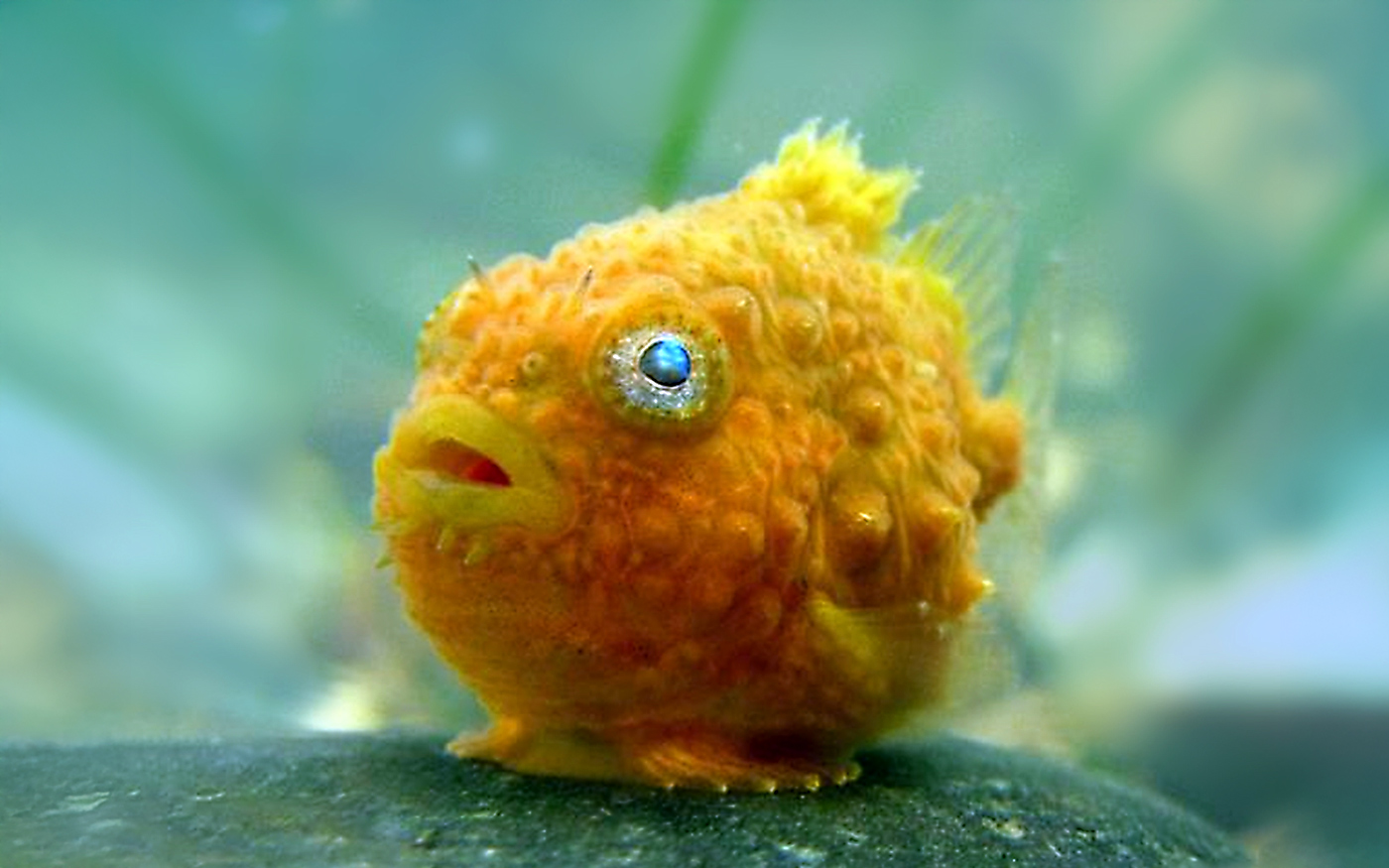Authors: Madeline Baldrey and Erin Pringle
Scientific name: Eumicrotremus orbis
Size range: 2.5 to12.7 cm (1 to 5 inches)
Identifying Features: Lumpsuckers are quite small and come in many colours (red, orange, purple, green and brown). They can also have silvery patches on their backs. Their round bodies are covered in spiny lumps called tubercles. The females have more tubercles than males. Lumpsuckers have large protruding eyes with light blue pupils that change colour in certain light. They have a dorsal fin, a tail fin, thin transparent pectoral fins and a specialized sucker disk on their stomachs formed by their modified pelvic fins. Their mouths are wide with flat large lips.
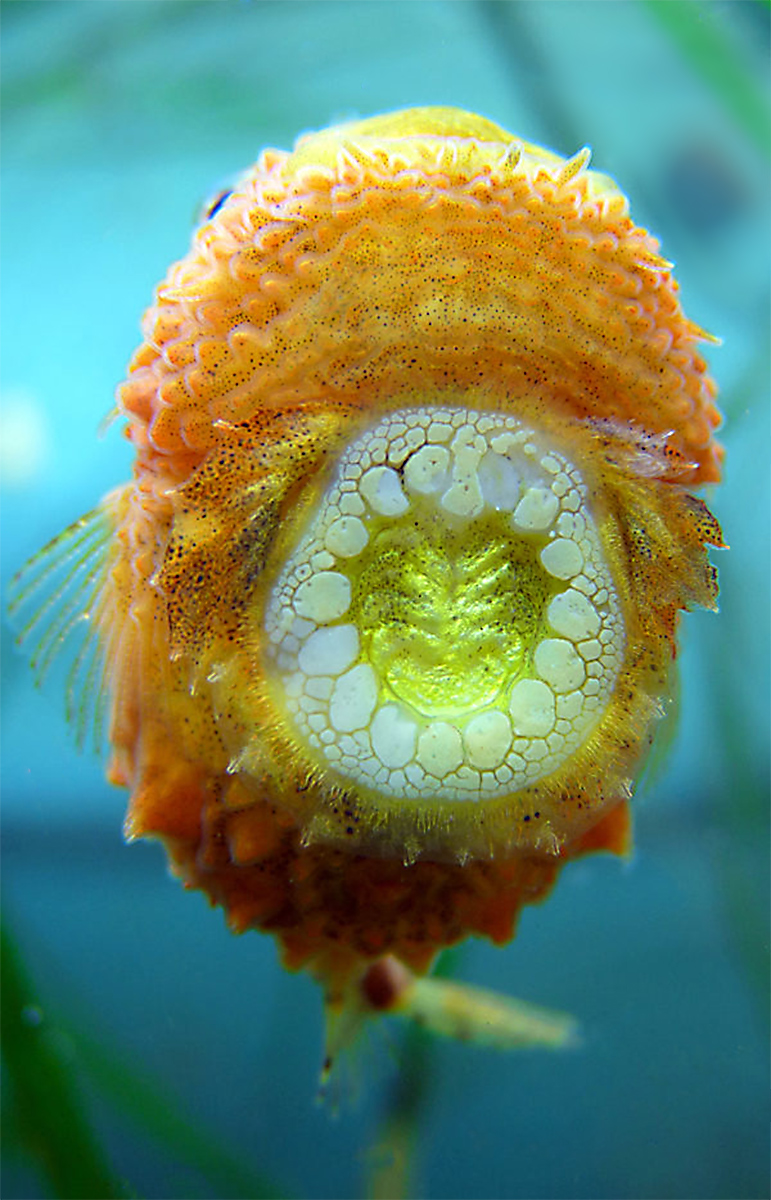
Habitat: Pacific Spiny Lumpsuckers are salt-water fish. They are mostly found in the Pacific Ocean along the coast of British Columbia and Asia. They can also be found in the northern Atlantic Ocean. Lumpsuckers are found as deep as 146 meters (480 ft.). They aren’t very strong swimmers so they are typically found in eel grass beds, and other locations with calm waters, stuck to rocks.
Food: Pacific Spiny Lumpsuckers chow down on invertebrates such as polychaete worms, crustaceans and molluscs. In captivity they eat frozen Mysis shrimp and when desperate have been known to bite into nudibranchs such as the Lemon Nudibranch (Archidoris montereyensis) and the Hooded Nudibranch (Melibe leonina). These marine organisms contain toxins so after securing a bit in its mouth the Lumpsucker promptly spat it out.
Predators: Lumpsuckers are eaten by Pacific Cod, Sable Fish, Lancet Fish and other larger fish. They avoid being eaten through camouflage or hiding amongst rocks and seaweed.
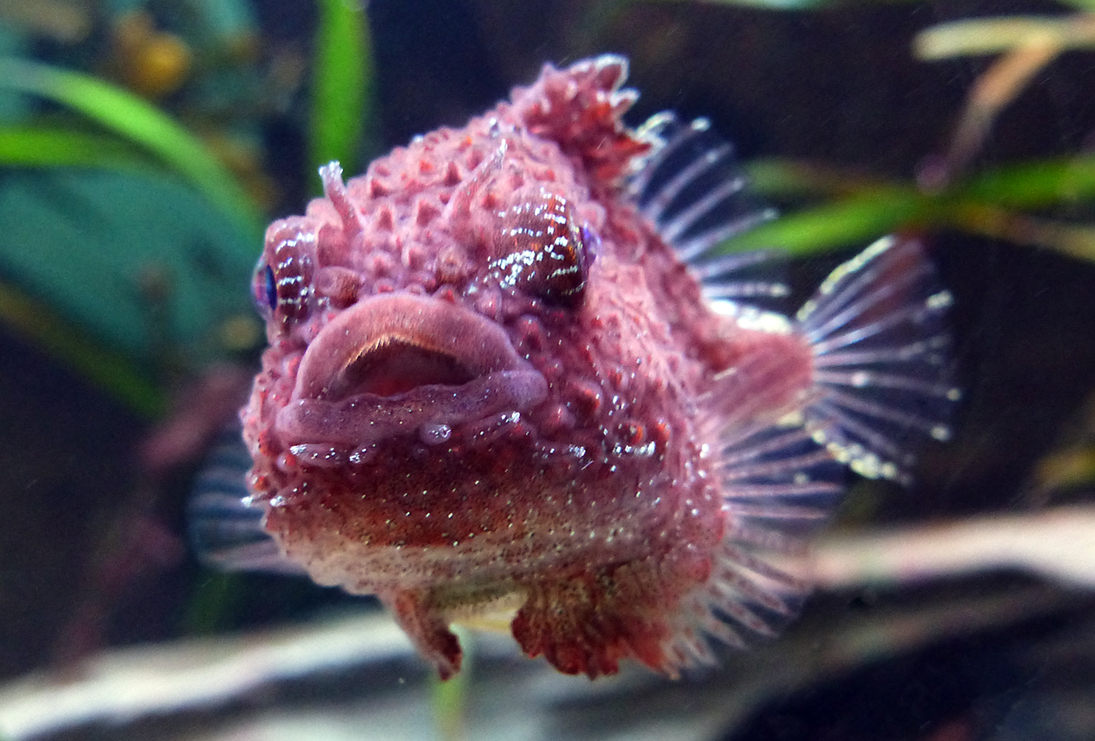
Photos by D. Young and Erin Pringle
Life Cycle: Lumpsuckers travel to spawn in shallow warmer water during the spring and summer. The female lays large spherical orange eggs that the male guards. You are able to see the ovaries in a ripe female. They stay in the warm water until the young fish are fully grown. In old age some Lumpsuckers lose their colour and become a dull light brown colour. They are solitary creatures and are often found alone.
Lumpsuckers at Victoria High School
Victoria High School has housed three Pacific Spiny Lumpsuckers over the past two years. When they first arrived they ate live shrimp but they were quickly domesticated and learned to eat frozen Mysis shrimp. When a new Lumpsucker is introduced into a tank with another one of its kind, the first Lumpsucker can be territorial and dominant, especially if the newer one is smaller.
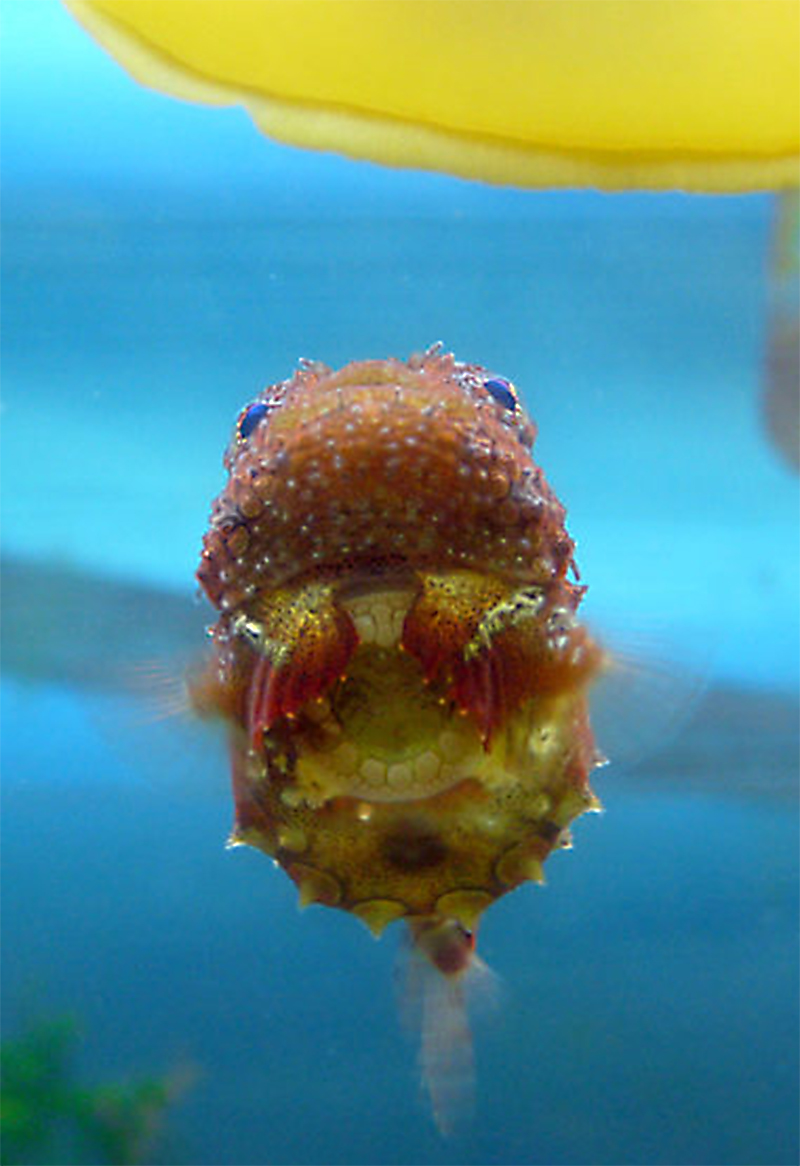
A Pacific Spiny Lumpsucker about to bite a Sea Lemon Nudibranch (Archidoris montereyensis). It promply spat it out.
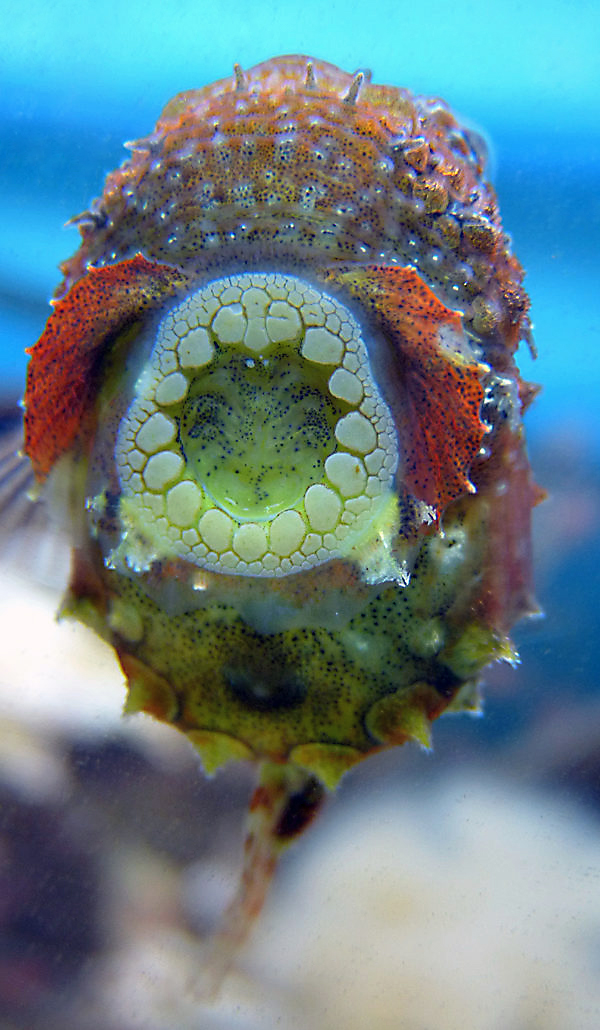
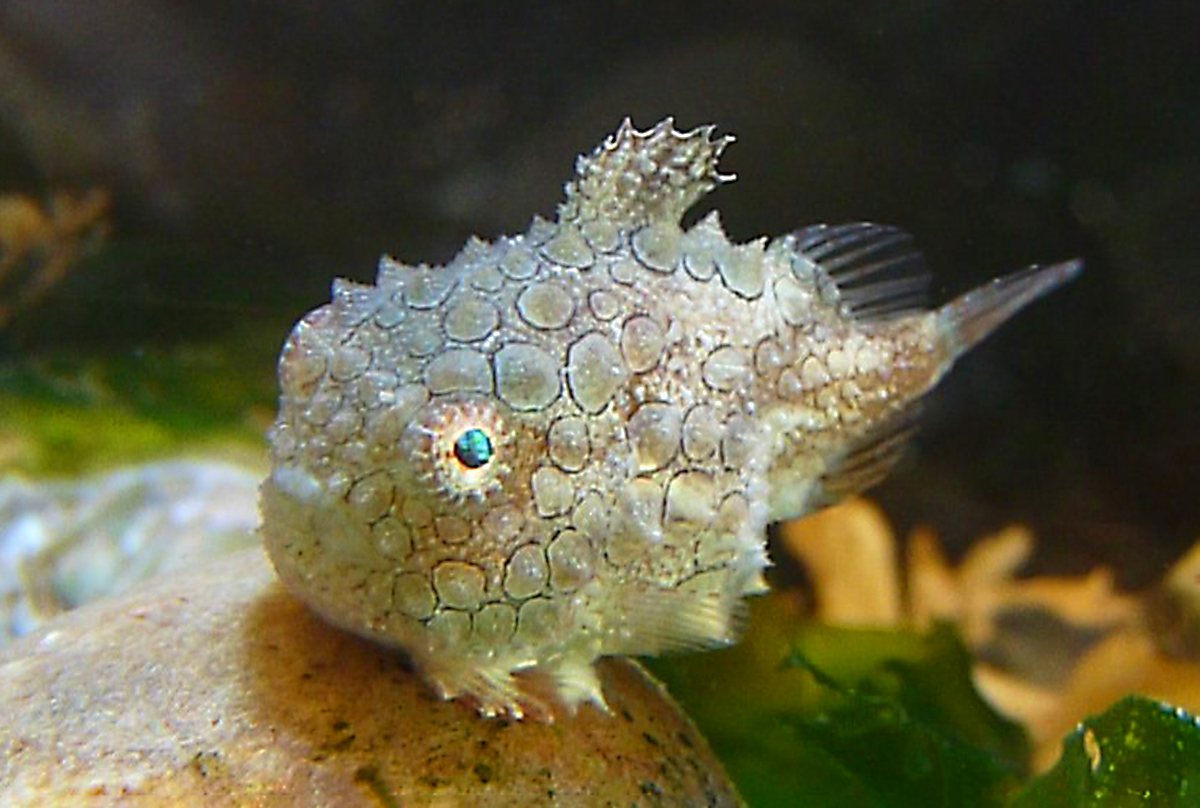
A juvenile
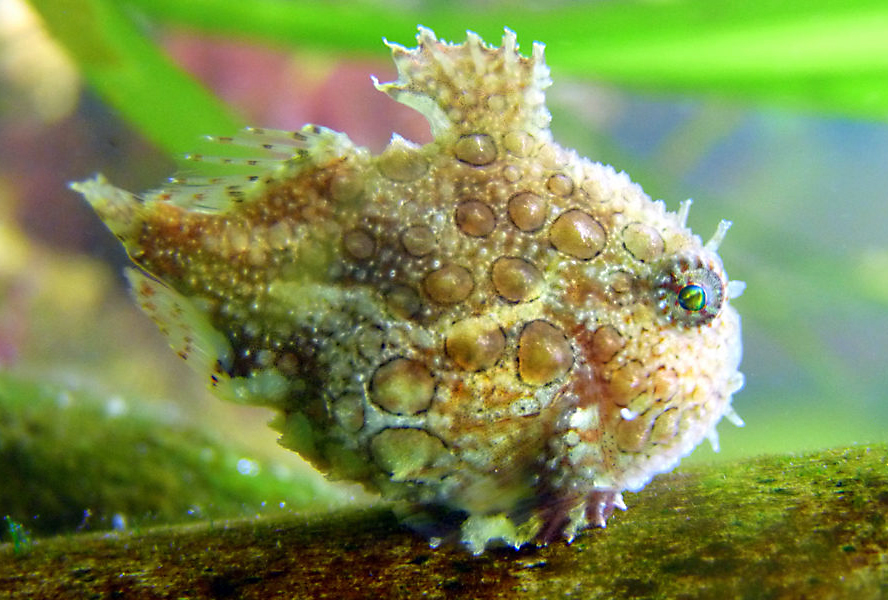
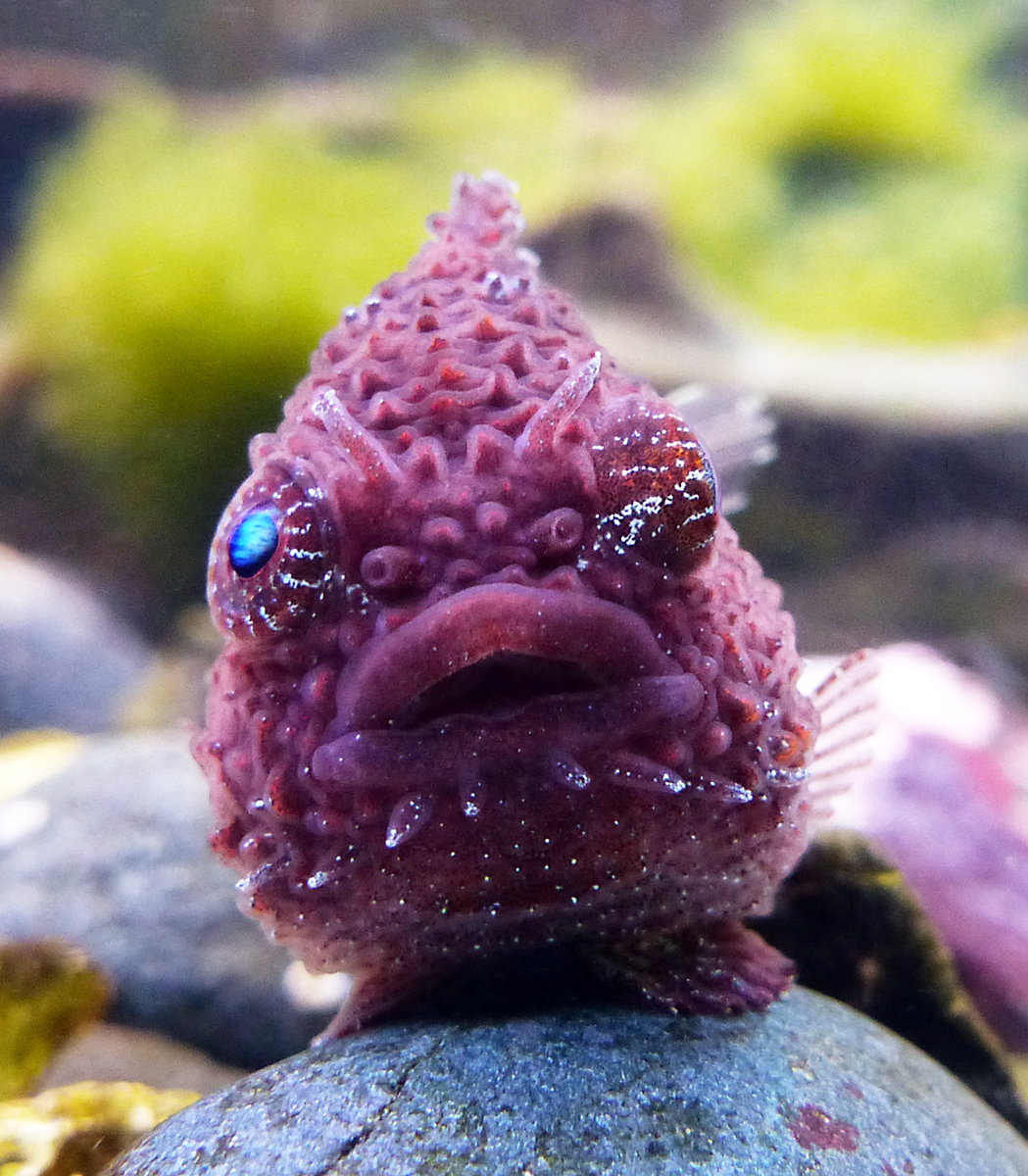
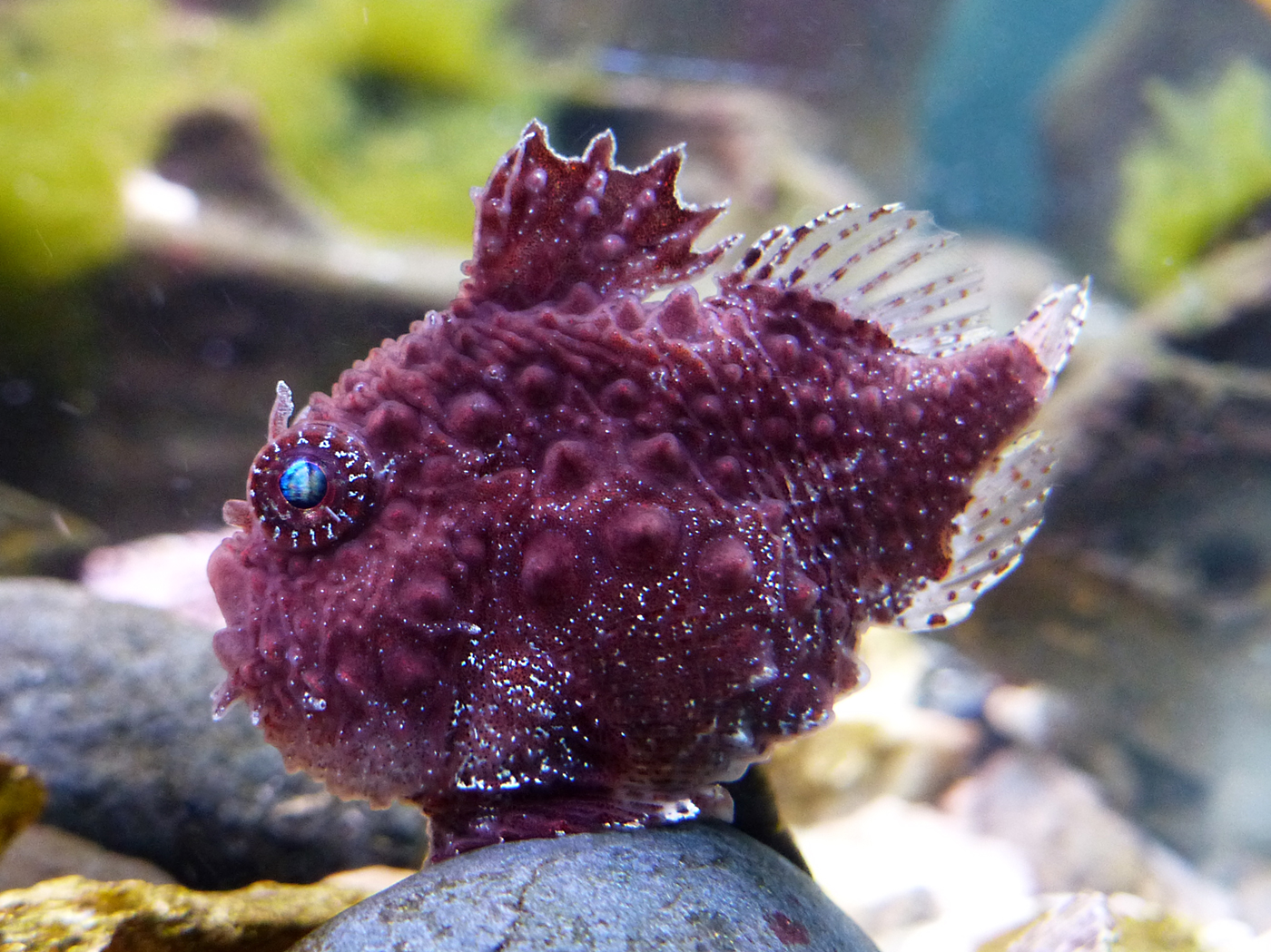
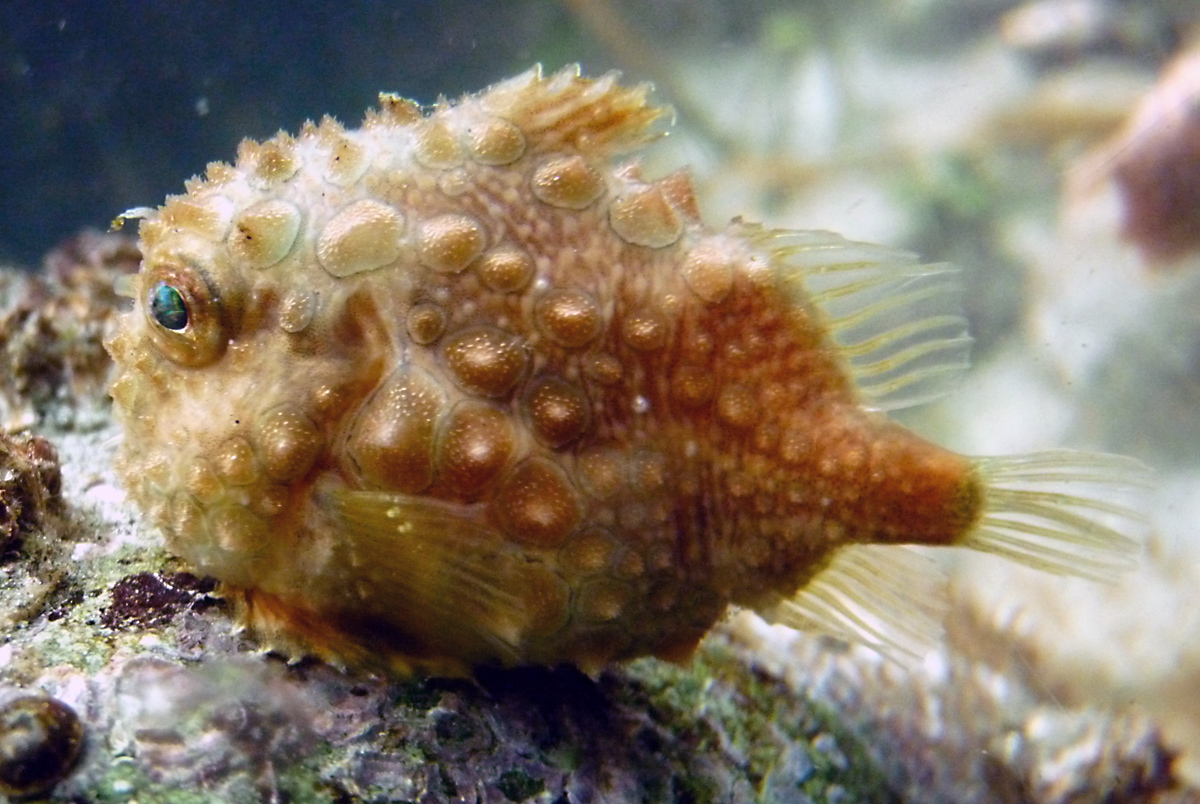
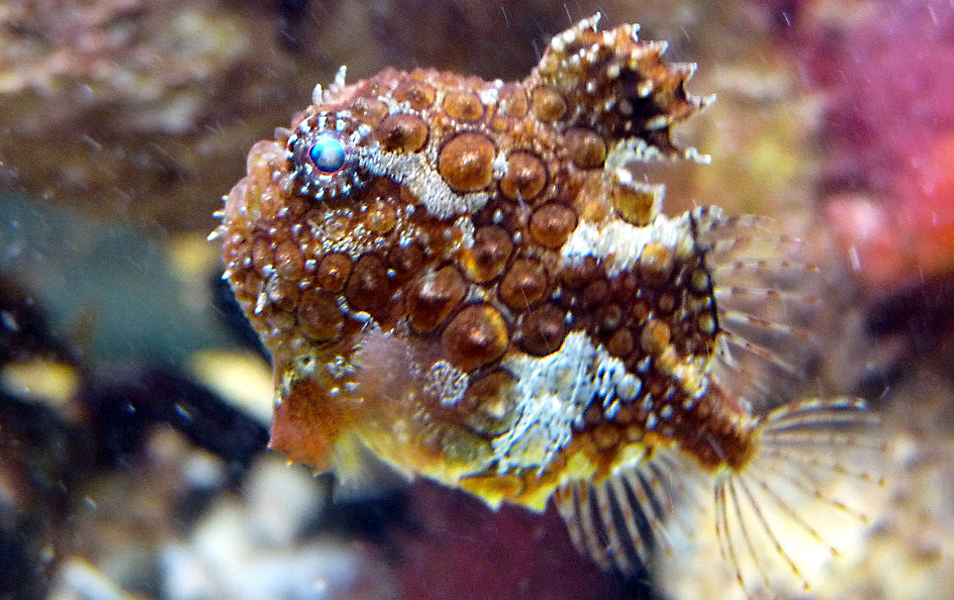
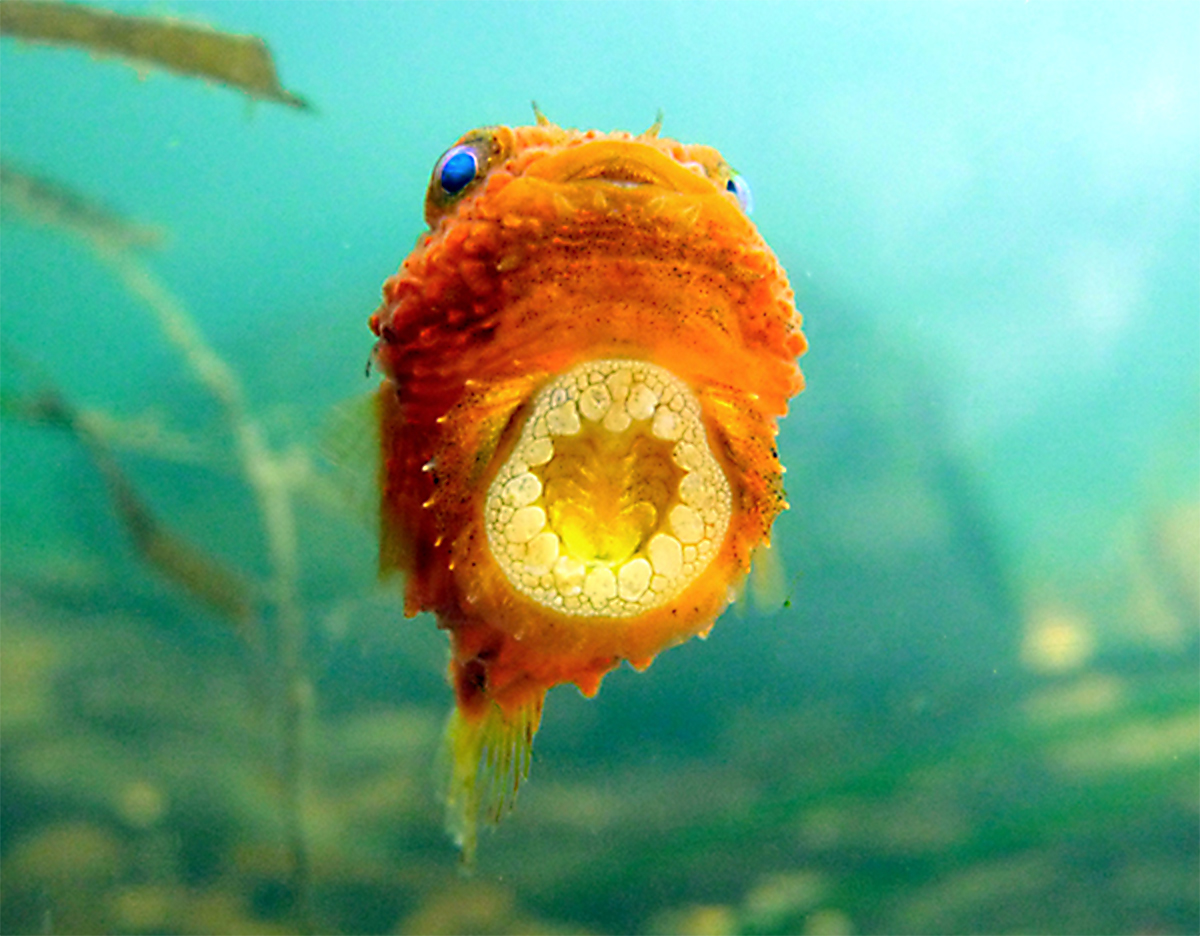
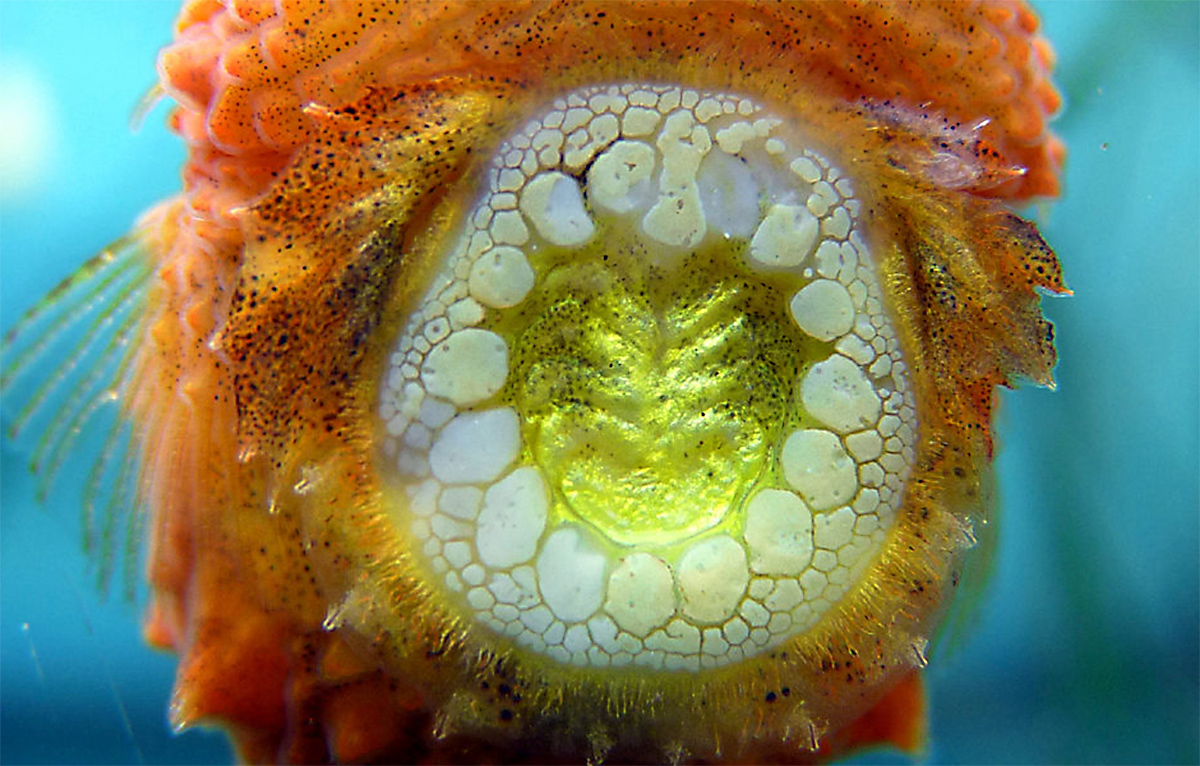
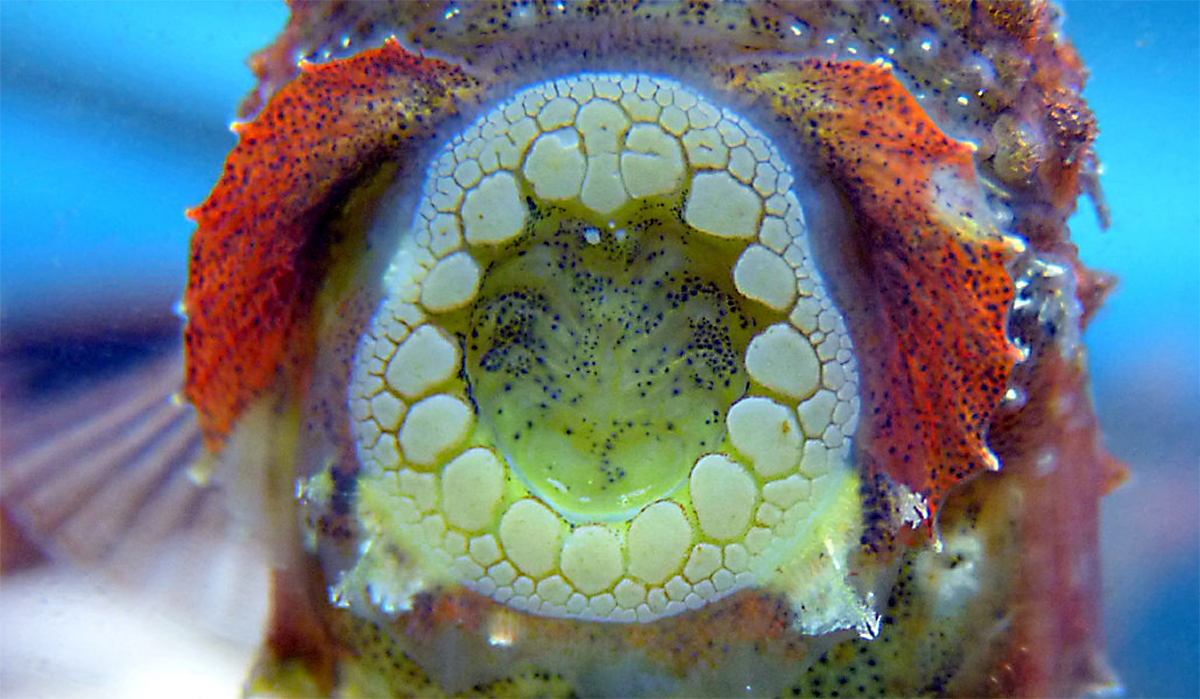
REFERENCES:
(July 2005) Animal fact files: Lumpsucker. BBC: Science & Nature: Animals. Retrieved January 10th 2010 from
[http://www.bbc.co.uk/nature/blueplanet/factfiles/fish/lumpsucker_bg.shtml]
Hart, J. L. (1988). Pacific fishes of Canada. Ottawa: Canadian Government Publishing Center.
We would also like to thank Dr. Jeff Marliave, Vice President of Marine Science at the Vancouver Aquarium, for his helpful information.
Photographs by E. Pringle and D. Young
Videos by D. Young


